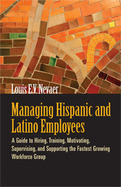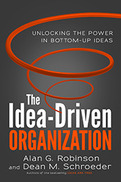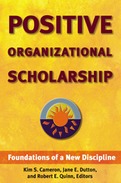-
The first book on supporting and developing Hispanic employees in any organization
-
Identifies three overarching concepts that shape Hispanic culture and explores how they influence workplace behavior and expectations
-
Written by a distinguished Hispanic author and authority on Hispanic economic behavior
Hispanics are the largest minority group and the fastest growing demographic in the United States—they are already 15% of the population and 22% of the workforce, and it’s estimated that by 2050 those numbers will go up to 36% and 55% In this much-needed new book Louis Naevar helps non-Hispanic employers and colleagues understand how Hispanics see the business world—and the world in general—so they can better support and develop this dynamic group of workers.
Drawing on his own ethnic background and years of experience as director of the organization Hispanic Economics, Nevaer identifies three concepts that shape Hispanic culture and often result in behaviors and beliefs very different than, and sometimes seemingly at odds with, those of non-Hispanics. He explores subtle nuances within the Hispanic community—which is no more monolithic than the “European” community—that will help employers appreciate differences and tensions between Hispanic workers. With this as an overarching framework, and using a wealth of specific examples, Nevaer shows how to develop Hispanic-friendly approaches in every aspect of the modern workplace, from recruitment, retention and evaluation to training, mentoring, and labor relations.
As Hispanics become an ever-larger segment of the workforce, organizations who fail to make them feel welcome and valued risk losing access to a significant source of talent and innovation, not to mention a connection to a major evolving market. Managing Hispanic and Latino Employees is an invaluable resource for creating an environment where Hispanic workers feel comfortable, recognized and rewarded.
2007
Offers a new approach for moving apathetic employees from passive compliance to active engagement
- Offers a new approach for moving apathetic employees from passive compliance to active engagement
- Told in an entertaining, page-turning fable format
- Draws on findings from an authoritative Gallup study of 4 million workers from 360,000 workgroups
In this follow-up to their bestseller Ideas Are Free , Alan G. Robinson and Dean M. Schroeder show how to align every part of an organization around generating and implementing employee ideas and offer dozens of examples of what a tremendous competitive advantage this can offer. Their advice will enable leaders to build organizations capable of implementing 20, 50, or even 100 ideas per employee per year.
Citing organizations from around the world, they explain what's needed to put together a management team that can lead the type of organization that embraces grassroots ideas and describe the strategies, policies, and practices that enable them. They detail exactly how high-performing idea processes work and how to design one for your organization.
There's constant pressure today to do more with less. But cutting wages and benefits and pushing people to work harder with fewer resources can go only so far. Ironically, the best solution resides with the very people who have been bearing the brunt of these measures. With Robinson and Schroeder's advice, you can unleash a constant stream of great ideas that will strengthen every facet of your organization.
While the concept of positive organizational scholarship encompasses the examination of typical and even dysfunctional patterns of behavior, it emphasizes positive deviance from expected patterns. Positive Organizational Scholarship examines the enablers, motivations, and effects associated with remarkably positive phenomena --- how they are facilitated, why they work, how they can be identified, and how researchers and managers can capitalize on them. The contributors do not adopt one particular theory or framework but draw from the full spectrum of organizational theories to understand, explain, and predict the occurrence, causes, and consequences of positivity.
Positive Organizational Scholarship rigorously seeks to understand what represents the best of the human condition based on scholarly research and theory. This book invites organizational scholars to build upon and extend the positive organizational phenomena being examined. It provides the definitional, theoretical, and empirical foundations for what will become a cumulative body of enduring work.
- Path-breaking scholarly volume exploring the dynamics in organizations that lead to extraordinary individual and organizational performance
- Establishes a new field of study in the social sciences
- Offers practical guidance for managers, as well as a future research agenda for understanding and enabling positive organizational behavior



























